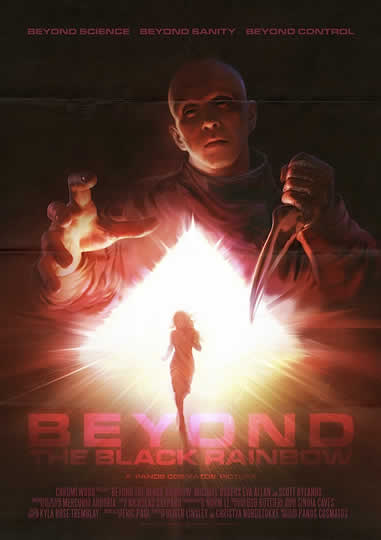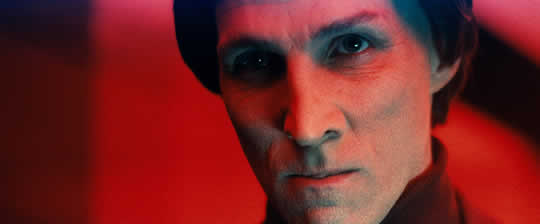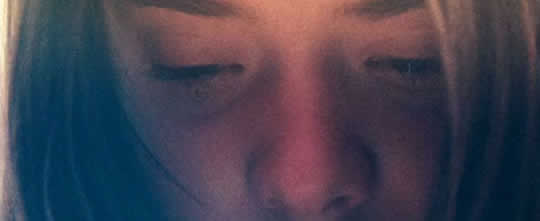 Set in the strange and oppressive emotional landscape of the year 1983, Beyond the Black Rainbow is a Reagan-era fever dream inspired by hazy childhood memories of midnight movies and Saturday morning cartoons. From the producer of Machotaildrop, Rainbow is the outlandish feature film debut of writer and director Panos Cosmatos. Featuring a hypnotic analog synthesizer score by Jeremy Schmidt of Sinoia Cave and Black Mountain, Rainbow is a film experience for the senses.
Set in the strange and oppressive emotional landscape of the year 1983, Beyond the Black Rainbow is a Reagan-era fever dream inspired by hazy childhood memories of midnight movies and Saturday morning cartoons. From the producer of Machotaildrop, Rainbow is the outlandish feature film debut of writer and director Panos Cosmatos. Featuring a hypnotic analog synthesizer score by Jeremy Schmidt of Sinoia Cave and Black Mountain, Rainbow is a film experience for the senses.
Panos Cosmatos, the writer & director of Beyond the Black Rainbow was born in Rome in 1974 to a Greek movie director father and a Swedish experimental artist mother. Cosmatos spent his early formative years traveling all over the globe before settling in Canada. In 1981 the family lived for a year in Mexico where exposure to the strange local interpretations of American pop culture had a profound and lasting effect on his creative life. Growing up in the isolated suburbs of Vancouver Island during the 80s, he obsessed over the minutiae of heavy metal, fantasy art, and science fiction and horror films. He still does to this day. He then immersed himself in the underground art and music scenes; making short films, album covers, and music videos with a burgeoning group of influential and ground breaking artists.
Bijan Tehrani: What motivated you to make Beyond the Black Rainbow?
Panos Cosmatos: Well I have always loved great trances and hypnotics that were about exploring and films that were about the mood and the environment on an aesthetic level. That is why I wanted to make a film like that. On a personal level I was spurred on by the death of my father in 2007. I was spurred on by the past and was sort of nostalgic for a period of time and I sort of just delved back into the films of my youth. I realized that this was just kind of an escape from reality and in the process of doing that I became interested in the past and the reality of it and that was the emotional inspiration for it.
BT: From what I know you never actually had a chance to see the films in the genre that you are recreating, in the horror and science fiction field. What is the story behind that? 
PC: One of the inspirations of the film on a story level is that when I was kid I was not allowed to watch horror films or anything violent for a number of years. But I would go to the video store and just sort of look at the VHS boxes and the artwork and read the descriptions and just imagine the artwork based on those descriptions. And that was the guiding inspiration for making an imaginary film.
BT: Beyond the Black Rainbow, goes beyond those films and becomes quite a different film with many different layers. Could you talk more about that?
PC: It was just sort of an evolution in the writing process and the overall look of the film. I just layered it and kept on layering it. I think the way that I work is that it is almost like a collage – a very fragmented collage – and I sort of immerse myself in images and sounds. Part of my writing process is just daydreaming and finding images that inspire me and move me in some way.
BT: After watching your film, I saw that the visual style of the film was like a character in the film. How did you develop that?
PC: The institute itself was a character in the film and the crystal pyramid was a character to itself as well. There were specific tones of color that I wanted to recreate. What I basically did was that I went to specific still frames from specific films that had the color tone that I wanted and I showed that to the DP and he did his interpretation of them. I really think that with filmmaking, for me anyways, is very much like painting and I wanted to explore color and the textures of an area and those are very important to me.
 BT: Are you a big fan of expressionist movies?
BT: Are you a big fan of expressionist movies?
PC: You know in the 90s I did my own personal version of film school, watching films in every area and listening to comedy tracks. I would not say that I ever fell in love with expressionist films. I think they are fascinating, but I would not say that I am particularly inspired by it. I just think that I find it difficult and I do not want to delineate between dramas, or trying to think about what style it is. I just sort of let it happen.
BT: How did you go about casting the film?
PC: The casting was extremely traditional casting process. Our casting director tested actors and recruited actors that she thought would be the best for the part, so it was a very traditional process.
BT: How did you go about working with the actors in the film?
PC: One of the things I was most nervous about was working with the actors. I had never worked with professional actors before. With the female lead Elena, her approach to acting was extremely instinctual, and physical and so I barely could talk to her about our character at all. Right from our first audition she just seemed to completely understand how to embody that character. But with Michael Rogers, we had long discussion about who this guy is and the undertones within the vibe of the character.
BT: How much has your background in making commercials or music videos helped you when you were making your first feature film?
PC: Over the years, I directed a few underground music videos and I made several short films on super 8 that I never showed to anybody except for a few friends. I just wanted to learn filmmaking in a more hands-on way. I spent a lot of time meditating on what it exactly was and what kind of film I wanted to make. The last music video I made was the first step into the last sense of style.
BT: How did you go about composing the audio of the film?
PC: From the get-go, I always wanted to make a film that was completely and immensely sensed in music. I had a great sound designer named Eric Paul who is brilliant. He is very musically inclined and since the film has a very musical quality to it, he was hypersensitive to score and I wanted the film to have an analog and synthesizer sound to the film. A friend of mine played me an album and there were scenes that were inspired by just by listening to his music.
BT: There are a lot of filmmakers who try to recreate a lot of the science fiction movies from the past and they seem almost Broadway, but your films seem to have a very different and unique interpretation of those films. Where are you going after this film? What is the next project that you will be working on?
PC: I am writing several things; I am focused on one in particular. I described this film as a Pink Floyd Album and the next one as a Slayer album. With every film I make I am very concerned with the feeling a film gives me rather than with the specific set pieces or art design or anything like that.
BT: How has the audience reaction been to your film so far?
PC: I would describe it as divided. There are those who love and those who really hate it. I just really hope over time that it finds an audience. It is a small audience honestly. I like the idea of people discovering the film and liking it.

